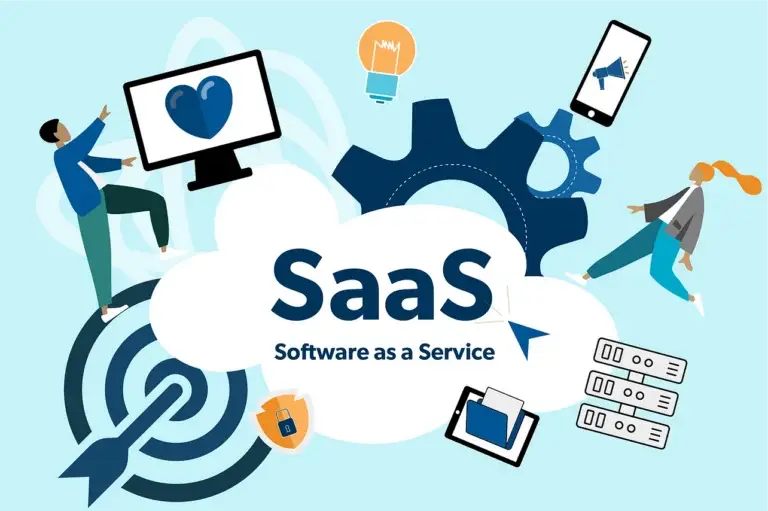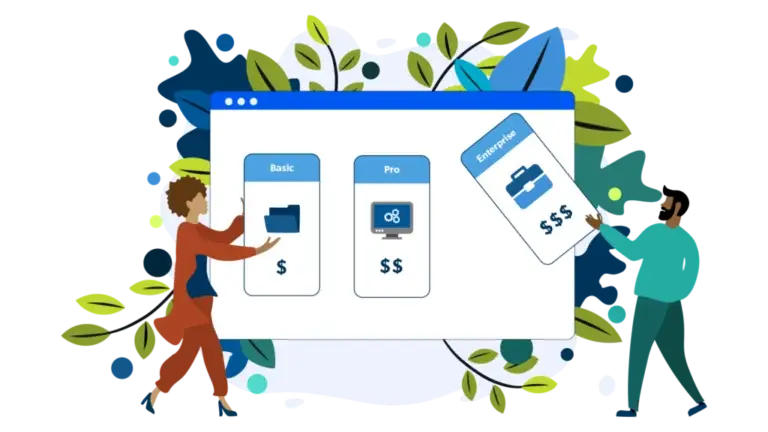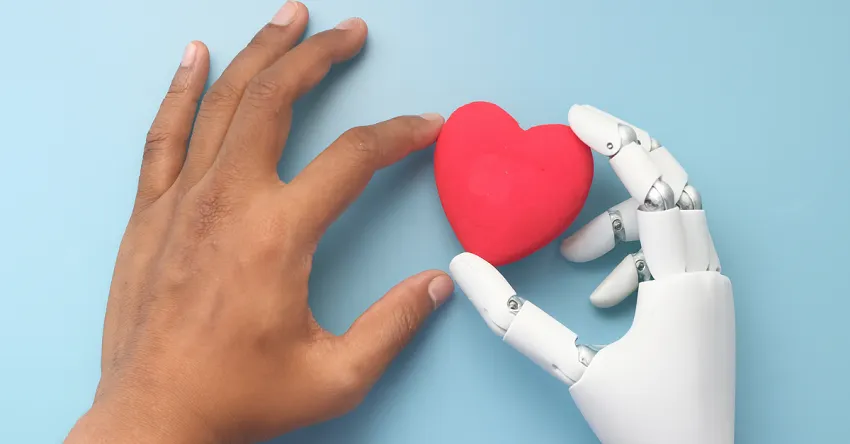8 Differences Between SaaS and Perpetually Licensed Software
When choosing a software solution for your organization the terminology and acronyms can be overwhelming. Keep reading to learn about different software licensing and delivery options to determine what’s best for your organization’s needs.

There are two primary models for software licensing. Software as a Service (SaaS), and perpetual licensing. Perpetual licensing is sometimes use synonymously with “on-prem” and SaaS is often called “the Cloud,” but there are important distinctions between all those terms which we’ll get into in a moment.
When considering SaaS vs. perpetual licensing, you can simplify it to a decision of renting vs. owning. Owning means you pay an up-front cost and get to keep the item (or service) for life. Renting means you have to pay on a month-to-month basis to get access to that item.
A good analogy would be renting an apartment versus owning a home. With a home you pay upfront (or agree to pay a bank) and once it’s yours, it’s yours for life. You will, however, quickly realize that you must also mow the lawn, replace the water heater when it breaks and keep your property safe and secure.
Comparatively, when you rent an apartment, your landlord probably contracts with someone to mow the lawn, replaces the broken appliances and is generally responsible for the upkeep of the property.
There are pros and cons with both renting and owning. If you plan to live in the home for the rest of your life, your upfront cost will probably be less than paying a higher month-to-month cost and you’re in control of a lot of the changes and updates to the property. However, if you need to move to a new area or you want to upgrade to more space and a safer neighborhood, renting might make more sense for you.
The same is true for SaaS licensing and perpetual licensing.
To start, let’s define some key terms that pop up often when choosing a software license that’s right for your organization.
SaaS Licensing

The SaaS acronym stands for “Software-as-a-Service.” With SaaS, software is accessed on a subscription basis. SaaS is typically delivered via the Internet and is a newer model of software licensing.
Perpetual Licensing
On-prem software was historically the more dominant model. When you bought a software package it was yours forever and you could choose to pay for maintenance and software upgrades. Generally, it’s paid for up-front with one licensing cost for the lifetime of your use of the software. Perpetually licensed software may be download via the Internet, a compact disc (remember those?), or installed manually by the company offering the software.

The Cloud vs. On-Prem
While the terms “cloud-based” and “on-prem” are often used interchangeably with SaaS and Perpetual Licensing, these terms refer to the delivery method and storage of data associated with software.The cloud refers to a specific structure of computers, servers, and data hosting, that is provided by the company you’re paying for the software. “On-prem” or on-premises means the data are housed on a server that located on the premises of the company buying the license.
It’s generally more common for SaaS programs to host data through the cloud and perpetual licensing has historically been associated with on-prem data storage. But, you can have perpetually licensed software where the data is hosted in the cloud, or SaaS software where you maintain your own server in-house.
Brief History of Software Licensing
To better understand the distinction between SaaS, Perpetual, Cloud-Based, and On-Prem, let’s explore the history of software licensing and data storage.
Companies like IBM have offered centralized software hosting as early as the 1960s, long before the personal computer was invented. These “time-sharing” services focused on providing affordable computing power and database storage to large corporations like banks. As hardware and computing became less costly and access to the Internet expanded in the late 1990s, more companies emerged that offered data hosting services and management of complicated business applications to smaller companies. Larger companies often chose to create their own customized solutions that were hosted internally.
The Software as a Service (SaaS) model caught on as software companies became more specialized. These companies managed their own specialized software and offered specialized offer solutions for things like: office management, payroll processing, accounting, customer relationship management (CRM), and more. Cloud-based data hosting was also gaining in popularity at the same time, so naturally many SaaS solutions took advantage of the newer delivery and hosting model.
How to Choose?

While most vendors now offer SaaS options, many still have perpetual licensing packages. There are many considerations when choosing between the two models. Below find the key differences between these two types of software to help you choose the option that’s best for your organization’s specific needs.
SaaS Benefits:
- Lower up-front costs and easy to deploy, no need to invest in infrastructure
- Accessed and delivered via the Internet, allowing for use regardless of location
- Updates and new features are pushed to all users automatically
- Collaboration and file-sharing is quick and easy
- Fewer risks with data security.
Perpetually Licensed Benefits:
One time cost
Control to choose when you deploy updated version
Local servers can be faster than the cloud and don’t depend on internet access
Less constraints on customization

1. Pricing
SaaS has no need for a physical distributor, so this model allows organizations to license the software directly from the company that makes the software. This reduces the up-front costs since most SaaS solutions are licensed on a monthly or annual basis.
This model works great for smaller organizations or businesses who want an “out of the box” product with standard features and functionality. It also eliminates hardware costs and other headaches of maintaining your own infrastructure like data servers.
A perpetual licensed software generally requires a larger up-front investment. This is typically categorized as a capital expenditure whereas SaaS is an operating expenditure. Depending on how your organization priorities expenses, one option may be more agreeable to your stakeholders than the other.
Something to keep in mind is that the total cost of ownership for software generally converges over time according to Software Advice.
Pricing may also vary based on number of users or “seats”, so be sure to factor that into your considerations. If there’s a per-user cost and you have two users, that’s much different than paying a per-user fee for thousands of users.
2. Support
Support options vary greatly within each software model. SaaS doesn’t readily support older versions of the software forever, so at some point all users must upgrade to the newest version. If your organization chooses a perpetual model, you get to choose when to implement the most updated version of the software, but some companies stop providing support for older versions, so keep that in mind when looking at the terms of service.
Usually using the newest version of the software is a good thing as it normally comes with new or improved features and increased functionality. Updating to the latest version may pose problems for larger or more specialized organizations as there may be significant costs for training and concern about user error with a newer version of the product.
Both SaaS and perpetually licensed software may have recurring fees for support, training, and updates. For SaaS solutions, the relatively low cost per user allows some software vendors to offer a “freemium” version of their software. This is generally a scaled back version of the core features. However, it may not come with access to live support and other helpful resources and may have fees for payment processing or other transactions.
3. Implementation
SaaS deployment usually only requires an internet connection and a device that meets the minimum hardware requirements needed for the software. They don’t require acquisition of new hardware or any physical set up. This makes implementation quicker and easier. It also makes onboarding new users quick and easy and can reduce time internal staff has to train new employees.
A perpetual license requires more investment for the initial cost and often also requires physical set-up, especially if it’s being added to your own servers (on-prem). Onboarding a new user may require the user to install the program manually and may limit the number of devices the software can be accessed on.
4. Updates

In addition to initial deployment, updates and new features vary between the pricing models.
5. Specialization
SaaS software includes one set of features and functionality. This means you can choose a solution that is specifically tailored to your industry or required functionality. This means you can find a solution that only has the features you want, and not pay for extras you won’t use.
Perpetually licensed software might be custom-made to meet very specific needs of an industry or even an individual customer. This is applicable especially to those operating in niche industries and markets or organizations that require a highly specialized product that has customizable features.
6. Customization
As with specialization, there are limitations on how much most SaaS solutions can be customized. Most SaaS platforms are sold “out-of-the-box” but do offer options for each user to create custom dashboards and modify specific things like data fields. Users can often customize client-facing pages their logo, brand colors and custom content. That’s generally where the customization ends.

7. Collaboration
SaaS allows for easier file sharing, document collaboration, shared calendars, and sharing of customer data between employees as most of it is hosted in the cloud. This means employees can access the software regardless of their specific location or the device they’re using. As many offices are embracing telecommuting and digital meeting platforms, remote collaboration has become more essential.
A perpetual license may have a limited number of computers it can be activated on and require saving of databases that must be saved on internal servers. VPN technology means more organizations can give their staff more flexibility in where they work, since the VPN allows them to access the internal servers in any location.
8. Security

As previously mentioned, SaaS solutions often host user data on the vendor’s servers. This may cause some to have concerns over data security, but reputable companies offer high levels of security and allow you to own your data. You may also be able to back up your data locally in addition to hosting it on their servers. Depending on your on-site infrastructure, hosting your data on the cloud might even be more secure than on-premises. A SaaS vendor can usually invest more in security measures, data backup, and maintenance than a small to mid-sized organization.
With SaaS, data is hosted in the cloud, which relies on an Internet connection. The better the connection, the faster you can access the application and your data. While Internet access is ubiquitous in some areas, many parts of the world still do not have reliable or high-speed internet. For example, NGOs often operate in multiple countries and may require options for locations that lack good Internet connections. In this case, a perpetual license may be needed. Also, while VPNs can offer remote access of servers, this can mean additional costs and additional software that’s needed. Also, without reliable Internet, employees cannot utilize VPN services.
There’s a lot to consider when choosing a software solution and it often comes down to the option that best meets your specific needs as an organization. It’s vital for organizations to look at what specific features they need, overall budget, and to compare the leading software options.
Learn more about Serenic Navigator and other software solutions from Sylogist.




